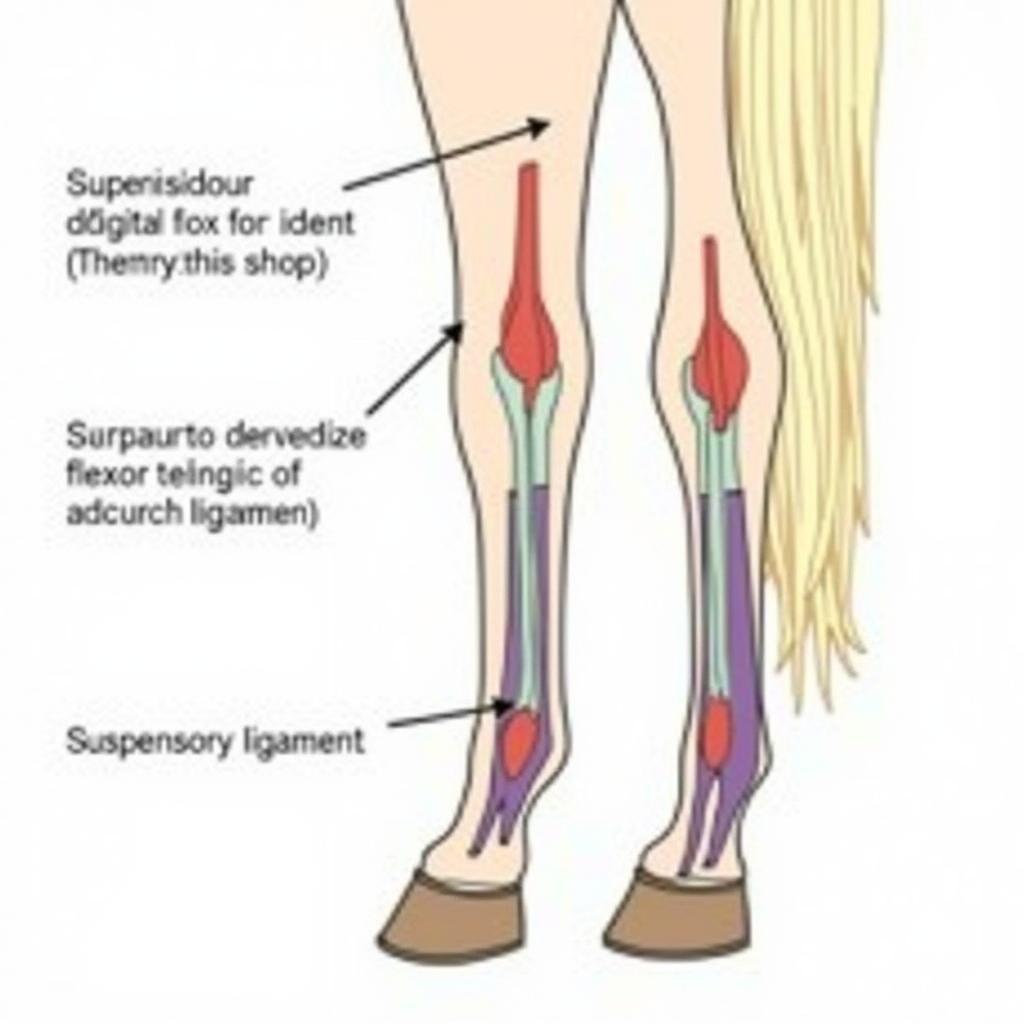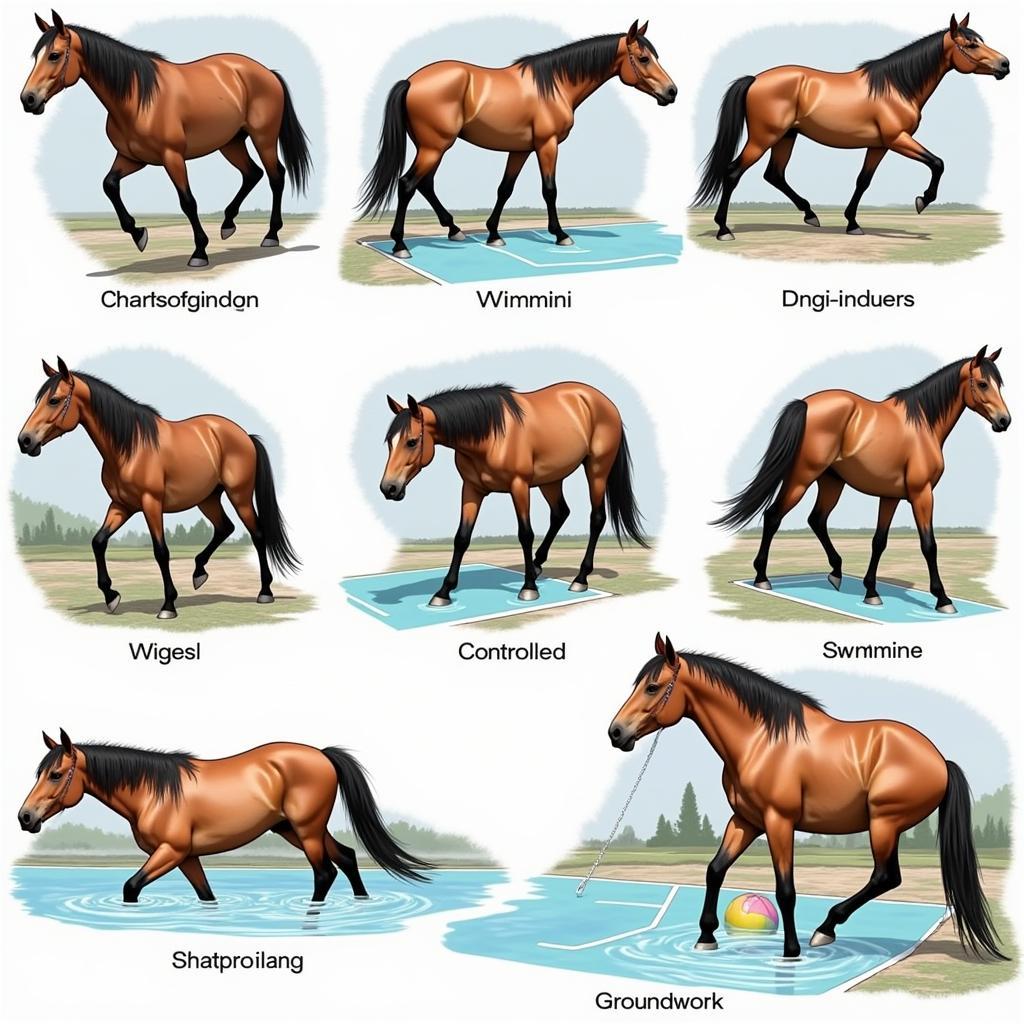Tendon injuries are a common problem in horses, often leading to lameness and time off from work. Understanding the complexities of Horse Tendon Injury Treatment is crucial for any horse owner, ensuring the best possible outcome for your equine companion.
Recognizing the Signs of Tendon Injuries in Horses
Early detection is key when it comes to effective horse tendon injury treatment. If you suspect your horse has a tendon injury, prompt veterinary attention is essential. Look out for these telling signs:
- Lameness: This can range from mild to severe, often worse at the start of exercise.
- Heat and Swelling: The injured area may be hot to the touch and swollen.
- Pain on Palpation: Your horse may flinch or react when the injured tendon is touched.
- Changes in Gait: Your horse may favor the injured leg, leading to a shortened stride or head nod.
Types of Tendon Injuries in Horses
Tendons, the tough cords connecting muscle to bone, are susceptible to various injuries. Here are the most common types:
- Tendinitis: Inflammation of the tendon.
- Tendon Strain: Overstretching or minor tearing of tendon fibers.
- Tendon Rupture: A complete or partial tear of the tendon.
 Horse Tendon Anatomy
Horse Tendon Anatomy
Diagnosing Tendon Injuries: What to Expect
Accurate diagnosis is the cornerstone of successful horse tendon injury treatment. Your veterinarian will likely use a combination of these methods:
- Physical Examination: Assessing lameness, swelling, heat, and pain response.
- Ultrasound: Visualizing the tendon to assess the extent of damage.
- X-rays: Ruling out bone involvement or other conditions.
Understanding Horse Tendon Injury Treatment Options
Treatment for horse tendon injuries varies depending on the severity and location of the injury. Here are some common treatment modalities:
1. Rest and Restricted Activity
Rest is paramount during the initial healing phase. Your veterinarian will advise on the duration of stall rest needed, which can range from weeks to months. Controlled exercise will be gradually reintroduced based on your horse’s progress.
 Horse Tendon Rehabilitation Exercises
Horse Tendon Rehabilitation Exercises
2. Cold Therapy and Bandaging
Applying cold therapy, such as ice packs or cold hosing, helps reduce inflammation and swelling. Supportive bandaging can further minimize swelling and provide support to the injured tendon.
3. Medications
- Non-Steroidal Anti-Inflammatories (NSAIDs): These medications, like phenylbutazone (“bute”) or flunixin meglumine (“banamine”), help manage pain and inflammation.
- Other Medications: Your veterinarian may consider other medications, such as corticosteroids, hyaluronic acid, or platelet-rich plasma (PRP), to promote healing.
4. Regenerative Therapies
- Platelet-Rich Plasma (PRP): This therapy utilizes concentrated platelets from the horse’s own blood to stimulate healing.
- Stem Cell Therapy: Stem cells are injected into the injured tendon to promote tissue regeneration.
5. Surgery
Surgical intervention is typically reserved for severe tendon injuries, such as complete ruptures.
 Veterinarian Examining Horse Tendon
Veterinarian Examining Horse Tendon
Long-Term Management and Rehabilitation
Rehabilitation is crucial to restoring your horse’s strength, flexibility, and soundness. Your veterinarian will work with you to create a tailored plan which may include:
- Controlled Exercise: Gradually increasing the intensity and duration of exercise.
- Physiotherapy: Techniques like massage, stretching, and therapeutic ultrasound can aid in healing.
- Corrective Shoeing: Specialized shoeing can help support the injured tendon and promote proper biomechanics.
Preventing Tendon Injuries: Proactive Measures
While not all tendon injuries are preventable, you can take steps to minimize the risk:
- Proper Conditioning: Ensure your horse has adequate conditioning before engaging in strenuous activities.
- Warm-up and Cool-down: Always incorporate proper warm-up and cool-down routines into your horse’s exercise regimen.
- Good Footing: Provide safe and level footing for riding and turnout.
- Regular Farrier Care: Maintain regular farrier appointments to ensure proper hoof balance and shoeing.
When to Seek Veterinary Help
If your horse shows any signs of a tendon injury, such as lameness, swelling, or heat, it is crucial to contact your veterinarian immediately. Early diagnosis and prompt treatment are essential for the best possible outcome.
Need More Information on Horse Tendon Injury Treatment?
For more in-depth articles on horse health, including specific tendon injuries and treatments, visit the Justus Horses USA website. You can find relevant information on ice hock boots for horses, sudden lameness in horse front leg, inferior check ligament horse, full leg ice boots for horses, and horse hock ice boots.
Have Questions? We Can Help!
Don’t hesitate to reach out to our team of horse care experts at Justus Horses USA. We’re available 24/7 to assist you. Call us at 0772127271, email us at [email protected], or visit us at QGM2+WX2, Vị Trung, Vị Thuỷ, Hậu Giang, Việt Nam.